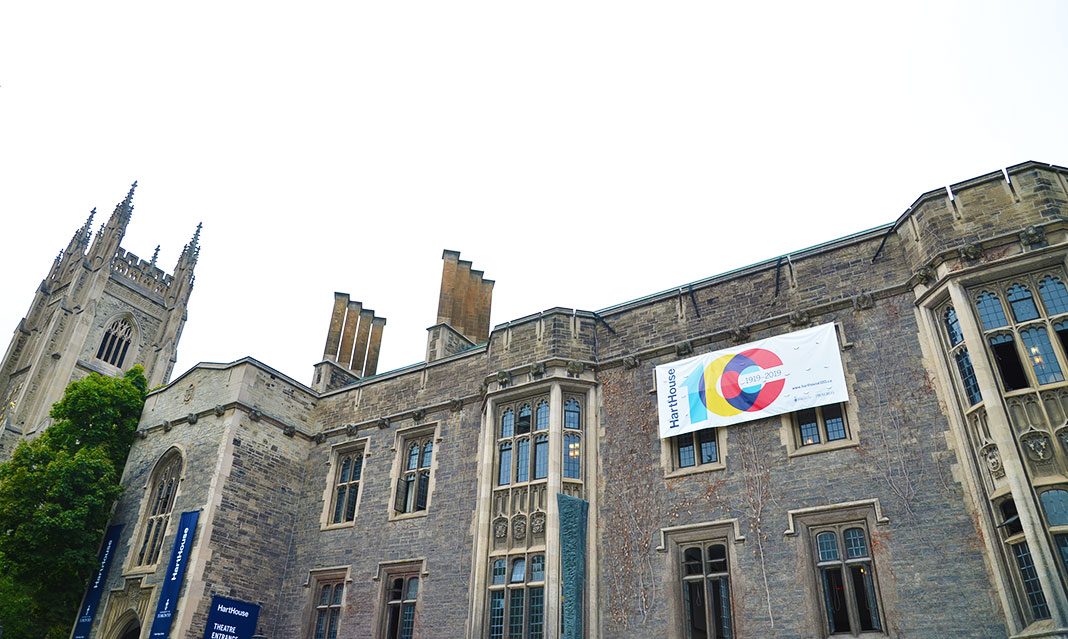To celebrate Hart House’s 100th anniversary, Talking Walls is an exhibit that integrates interactive spaces in the hallways of the famed student centre for arts.
Day Milman, the senior coordinator at Hart House, curated three separate exhibits: “What are you Becoming?” “Change Happens Here,” and “What I Wish I Knew: Peer Wisdom,” which will run from October 22 to October 31.
The three exhibition spaces each take up one wall on each floor of Hart House.
“What are you Becoming?” decorates the Fitness Centre hallway with rows of photographs of students. Each student was asked “what are you becoming?” and photographed with their response written on a blank page.
Each answer reflected the ways the university experience changes us.
Some responses were expected like “lawyer,” “pharmacist,” and “teacher,” which point out how university helps us become the professionals we aspire to be.
Students also responded with words like “fearless,” “good student,” “activist,” “married,” and “me.” These words show how university does more than educate. It transforms the way you view yourself, your relationships, your political stances, and your work habits.
One photo stood out as oppositional. A student wrote “poor!” on his card. It was incredibly interesting to note the different responses. Yes, we will be lawyers and activists, but many of us we will also be in debt.
Overall, the photos on the wall, embody students’ feelings about being part of the University of Toronto. The display pushes you to think of the tens of thousands of others that walk the same halls as you, each growing and changing every day just as you are into who they’re going to be as a citizen of the world.
Upstairs, framed posters from 1919-2019 titled “Change Happens Here” line the main floor hallway and detail Hart House’s history. The piece was written by Day Milman and Dr. Leonarda Carranza and designed by Alexander Young.
The exhibit focuses on moments of increased change and tension while the piece walks you through the inclusion of women as members of Hart House.
The process took so long, that Audrey Hozack, the Assistant Warden in 1971, was barred from entering in certain Hart House rooms.
Milman and Carranza go on to discuss the inclusion of Muslim Faith groups, LGBTQ+ groups and Indigenous voices, as well as accommodation for those with accessibility concerns.
The authors insist that Hart House recognizes its errors of the past and is reconciling with the future.
“Change happens at the speed of trust,” Milman and Carranza wrote.
The authors’ exhibition represents Hart House’s ever-present balancing act between tradition and growth.
They comment on the clash between the colonial nature of the building with the multitude of diverse art and voices inside.
“What I Wish I Knew: Peer Wisdom” in the second-floor hallway highlights quotes about growth from students. Each poster pulls a key quote from a brief interview with a student on what they wish they could tell themselves in the past.
Milman placed QR Codes at the bottoms of each poster for museum-goers to gain more context.
The interactive portion of the posters brings life to the phrase “if these walls could talk” because now we know exactly what they’d say.
If you’re interested in experiencing the exhibition, the second-floor hallway will host a new Talking Walls exhibit curated by The Art Museum titled, “Re-imagining Place: The Hart House Centennial Art Commission” from November and into early December.



